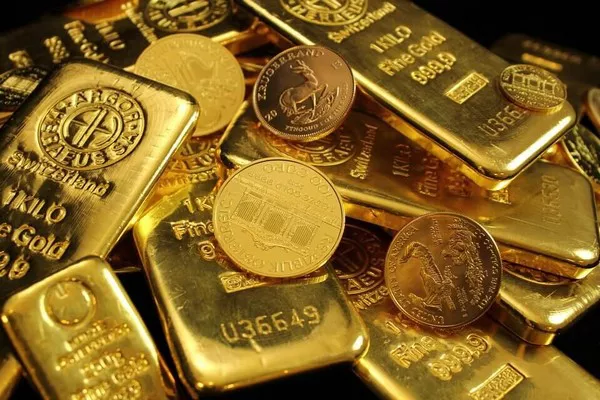Gold, which soared to a historic peak of $3,500 in April, has entered a consolidation phase as investors await the next catalyst for a sustained rally. The precious metal faced a setback on Thursday following the Federal Reserve’s decision to keep interest rates unchanged, while reaffirming its projection for a half-point cut by the end of the year.
Despite the dip, geopolitical developments—particularly renewed instability in the Middle East—continue to lend support to gold’s safe-haven appeal.
Gold Prices Decline After Fed’s Steady Stance
On Thursday, global spot gold dropped 0.50% to $3,373.10 at 4:29 GMT. Similarly, U.S. gold futures fell 0.50% to $3,391.06. The pullback follows the Fed’s announcement to hold rates steady, dampening immediate bullish momentum in the bullion market.
The U.S. dollar index edged up 0.07% to 98.98, further pressuring gold by making it more expensive for buyers using other currencies.
Dubai Gold Rates Slip
In Dubai, gold prices mirrored the global trend. The 24-carat variant declined AED2 to AED406.75, while 22-carat gold fell AED2 to AED376.50. The 21-carat version slipped AED1.75 to AED361.00, and 18-carat gold dropped AED1.50 to AED309.50.
Geopolitical Risks Keep Market on Edge
Gold’s recent rally has been underpinned by escalating tensions in the Middle East. Market participants remain focused on potential U.S. involvement in the Israel-Iran conflict, a move that could significantly elevate geopolitical risks and boost demand for gold.
On Wednesday, U.S. President Donald Trump declined to confirm whether the U.S. would engage directly in the ongoing conflict, leaving markets in suspense. Gold is historically favored during periods of geopolitical and financial volatility, acting as a hedge against global instability.
Long-Term Outlook Remains Bullish
“Gold, which back in April hit a record high at $3,500, has moved into a consolidation phase while awaiting the next potential bullish trigger,” said Ole Hansen, head of commodity strategy at Saxo Bank. “Despite the current lull, bullion continues to attract strong demand from central banks and long-term investors concerned about sovereign debt, inflation risks, and the weakening U.S. dollar.”
Fed Signals Caution Despite Rate Cut Projections
On the monetary policy front, the Federal Reserve’s cautious stance weighed on gold. While policymakers reiterated their forecast for a 0.5 percentage point rate cut this year, they also indicated a slower pace of easing. Fed Chair Jerome Powell warned of “meaningful” inflation risks ahead, particularly due to rising import tariffs.
Hamza Dweik, head of trading at Saxo Bank MENA, noted: “This pause reflects the Fed’s ongoing ‘wait and see’ approach amid a complex economic backdrop characterized by persistent inflationary pressures, resilient labor market data, and heightened geopolitical and trade uncertainties.”
He added that the first potential rate cut might not occur until October, with only limited easing likely by year-end.
Demand for Hard Assets Growing
Analysts believe that growing concerns about U.S. fiscal stability, a softening labor market, and looming trade disruptions could bolster the case for hard assets like gold. These conditions may also prompt the Fed to adopt a more dovish stance sooner than previously expected.
“In this environment, gold prices pushing toward the $4,000 mark over the next 12 months is no longer out of the question,” Saxo Bank analysts observed.
Precious Metals Mixed
While gold slipped, other precious metals saw gains on Thursday. Spot silver inched up 0.04% to $36.75. Platinum rose 1.55% to $1,342.78, while palladium advanced 0.98% to $1,058.80.


